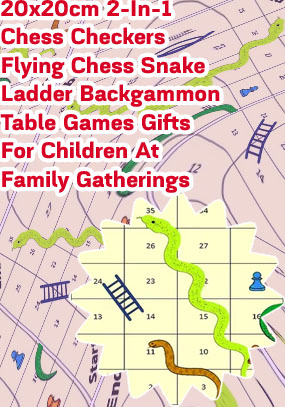Game snake and ladder

Questions & Answers
Snakes and Ladders originated in India as part of a family of dice board games that included Gyan chauper and pachisi (known in English as Ludo and Parcheesi). The game made its way to England and was sold as "Snakes and Ladders", then the basic concept was introduced in the United States as Chutes and Ladders (an "improved new version of England's famous indoor sport") by game pioneer Milton Bradley in 1943. Snake ladder games Sometimes, you and your friends get bored that you don't know what to do. However, playing board games is fun, but CREATING YOUR OWN GAME IS EVEN FUNNER! By following the steps you are about to see, you and your friends will create your own SNAKES & LADDERS game, and you will forget that boredom exists.
Snake ladder game
Suitable for one or more people Even and Odd Games Snakes and Ladders Whereas landing at the top of a ladder the player will stay there until the next turn. The player does not move to the bottom of the ladder.

Sign up for free to The School of Life and get news and a 10% Discount
To play this game, you will need the following types of equipment: VectorStock® Complaints: If you wish to make a complaint about how we have handled your personal information, please contact us using the details below and provide us with full details of the complaint. We will promptly investigate your complaint and respond to you, in writing, setting out the outcome of our investigation and the steps we will take to deal with your complaint.
Giant snakes and ladders board game
100 squares full of traps and tricks…Roll the dice and try your luck! Ladders will take you up but Snakes will take you down! Are you afraid of serpents? No problem! This game is two versions in one — just choose your game mode. You can play against a computer, or two players can compete against each other. Similar Applications For example, consider the board shown, the minimum number of dice throws required to reach cell 30 from cell 1 is 3. Following are the steps:a) First throw two dice to reach cell number 3 and then ladder to reach 22 b) Then throw 6 to reach 28. c) Finally through 2 to reach 30.There can be other solutions as well like (2, 2, 6), (2, 4, 4), (2, 3, 5).. etc.
You Might Also Like:



